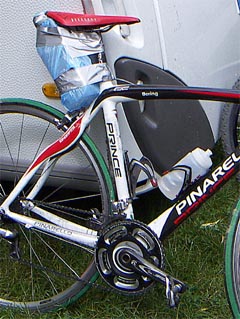A heart rate monitor is one of the most used tools for pacing strategy during intervals or competitions, analyzing of performance and detection of overtraining. Polar heart rate monitor watches make very precise measurement of the current pulse. This information can be very useful for an experienced user who understands the exercise physiology behind heart rate regulation.
Getting started
One of the best ways to learn to use a heart rate monitor is to use one during training. Don’t buy one of the top models from Polar (cs600, s725 etc.) – these watches are not made for beginners. Instead try one of the basic Polar monitors for a beginning. These watches are cheaper and easier to deal with. There are also several other manufacturers of monitors and some of them are probably cheaper. My point is that for a beginner who has never tried heart rate monitors before, it might be a clever idea to buy one of the cheaper models for a beginning and then buy a more advanced heart rate monitor when you know which kind of data you are interested in. A Polar cs600 is a great tool for experienced riders, but is very likely to be overkill for a beginner.
Notify how your heart rate reacts
When you have bought a heart rate monitor: Get out on the roads! Spend a month with your regular training program, just wearing the monitor, but notifying how the heart rate reacts to the efforts. It is very interesting to study the heart rate and very quickly you will discover that you start to use the monitor for pacing. At this point you are already getting paid back for your investment, since you train harder and are more motivated during the ride.
Watch your own heart rate monitor – not your training partner’s…
The fact is that you can only compare heart rate values with your own previous registrations. The reason for this is that we all have a different anatomy of our cardiovascular system. But these systems are all based on the same physiological mechanisms. Thus, we can learn from each others’ physiological experiences and adaptations, but we can’t compare individual heart rate values. E.g. your resting heart rate is 58bpm while your friend’s heart rate is 42bpm, still I can’t say which one of you are in the best shape nor have the highest VO2 max.
Your maximum heart rate is correlated to your age, but that does not mean that we all fit in to 220-age formula. There is a huge standard deviation because we all are anatomically different. Just like with the resting heart rates, maximum heart rates does not predict performance.
Be patient
It is not necessary to use a special heart rate focused training program when you start to use it. As I said, just wearing the monitor for the first month is a very good education. I remember when I started to use a heart rate monitor for the first time back in the mid 90’s. At that time I had read some literature about general exercise physiology and heart monitors, but I lacked practical experience with the monitor. The result was that I made some target intervals for my heart rate which triggered the alarm system to beep most of the time. After a few of these rides I started to ride without target zones until I knew more about how my heart rate reacted during cycling. The lesson I learned was that you have to be patient and wait a while before you start doing intervals based on heart rate target zones.

